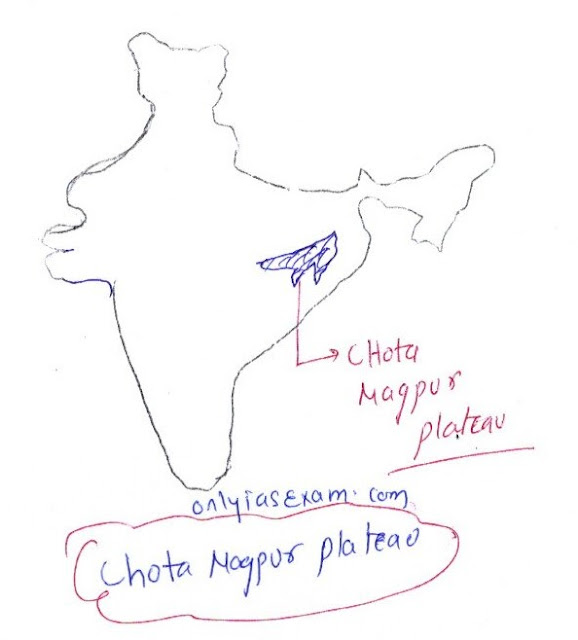Question.
Study the maps to explain why Chota Nagpur is a storehouse of minerals.
( Chapter - 5 Minerals and Energy Resources, Cass X NCERT Contemporary India -II )
Answer.
Chota Nagpur ( Chhotanagpur) is an eastern extension of peninsular India and the Damodar River flows through it. Most of Jharkhand and the adjoining region of Jharkhand which are in Chhattisgarh, Odisha, West Bengal, and Bihar comes under Chota Nagpur. Chotanagpur mainly consists of Ranchi Plateau, Hazaribagh Plateau, and Koderama Plateau.
Chota Nagpur is rich in metallic and non-metallic minerals. Chota Nagpur is rich in mica, coal, iron ore, manganese, bauxite, uranian, limestone, sillimanite, and copper. That's why Chota Nagpur is called the storehouse of minerals.
Damodar Valley is famous for its coal reserves in India.
The Hazaribagh region is famous for its mica deposits and Koderma is also known as the mica capital of India.
Copper reserves are found in Singhbhum of Jharkhand.
Iron ore is most widely found in the Odisha Jharkhand region; Singhbhum, Mayurbhanj, and Keonjhar are the major iron ore producers of the Chota Nagpur region.
Uranium reserves are also found in the Singhbhum and Hazaribagh districts of Jharkhand.
Manganese reserve is found in the Nagpur and Bhandara districts of Odisha.
There are vast deposits of limestone in the Chota Nagpur region. Hazaribagh, Giridih, Bokaro, Ranchi, Garwa, and Pakur districts are some of the important centers of limestone mining.
Bauxite deposits are also found in the Chota Nagpur region.
You may like also:

ConversionConversion EmoticonEmoticon